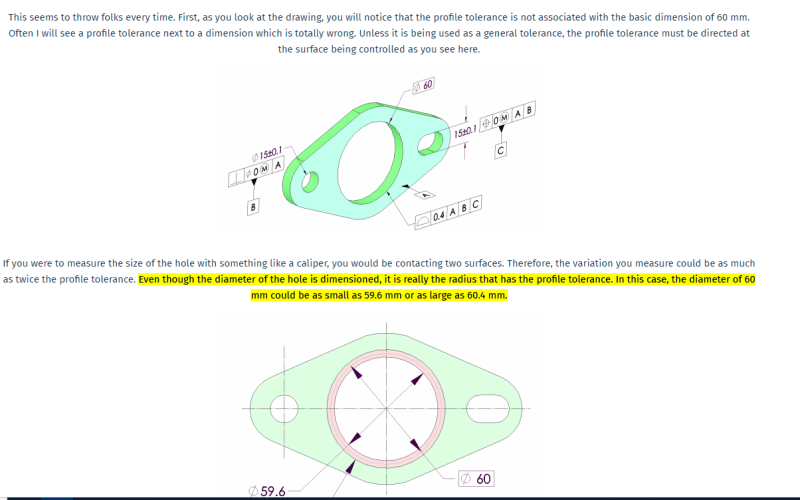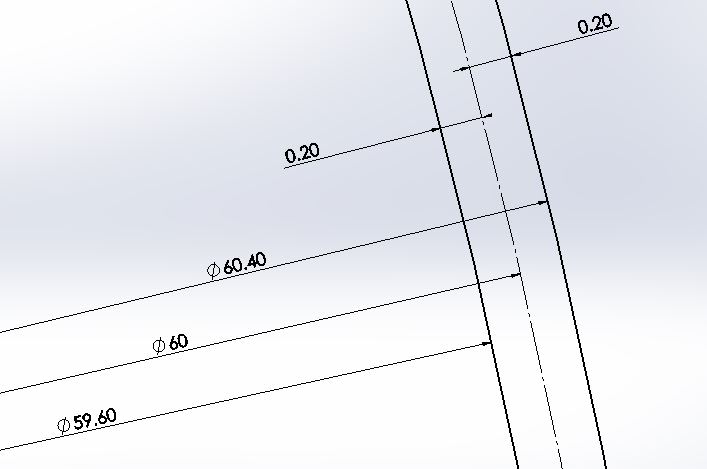Hi guys,
See attached picture.
I am looking for how profile tolerance application differs from a feature of size to a single surface ?
If i looked at the attached sketch I always assumed, whilst the part was constrained with datum features A + B + C we would have a theoretical Ø60 cylinder.
The tolerance band would be 0.4 total . 0.2mm per side
Could anyone give me some guidance on this.
Thanks
Ross

See attached picture.
I am looking for how profile tolerance application differs from a feature of size to a single surface ?
If i looked at the attached sketch I always assumed, whilst the part was constrained with datum features A + B + C we would have a theoretical Ø60 cylinder.
The tolerance band would be 0.4 total . 0.2mm per side
Could anyone give me some guidance on this.
Thanks
Ross



![[smile2] [smile2] [smile2]](/data/assets/smilies/smile2.gif)